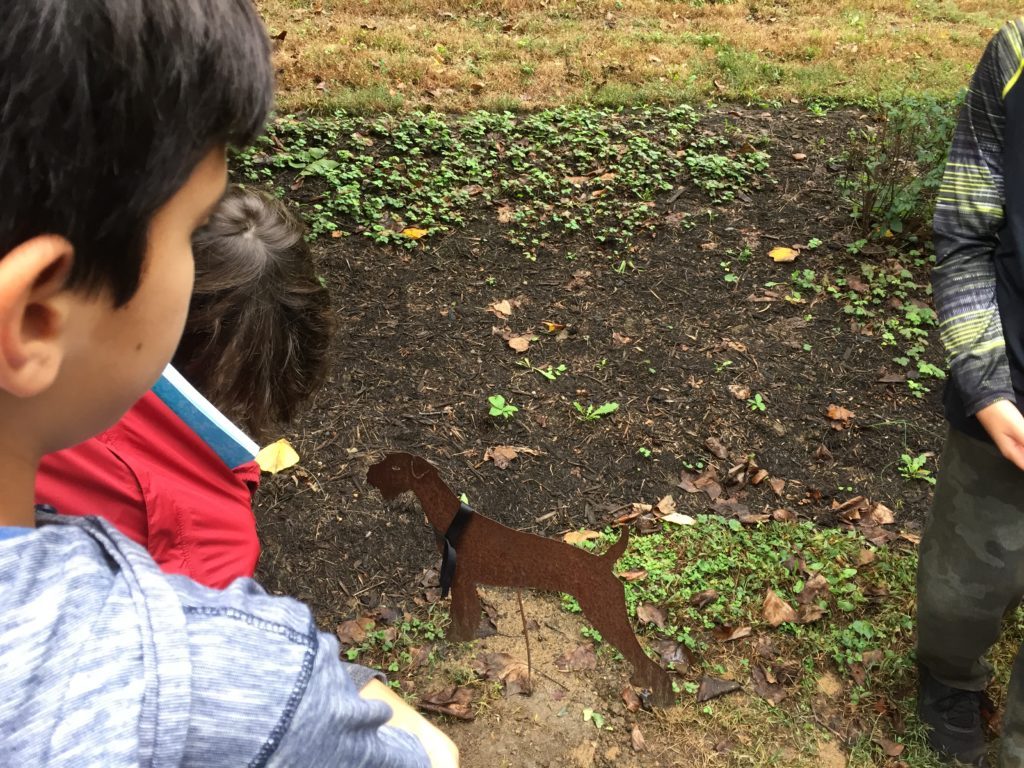What is Mentionable is Manageable
I have been on a bit of a Fred Rogers kick lately. It began with going to see the excellent documentary film about his life and work this summer – twice (Won’t You Be My Neighbor?). It continued with a visit to the Central branch of the Free Library of Philadelphia to see and hear Maxwell King, author of the biography, The Good Neighbor: The Life and Work of Fred Rogers this fall. (He was joined by David Newell, the actor who played “Speedy Delivery” Mr. McFeely for five decades on his television show.) Now I am working my way through the biography itself.
From all of this, the line that resonates with me most deeply is: “Anything that’s human is mentionable, and anything that is mentionable can be more manageable. When we can talk about our feelings, they become less overwhelming, less upsetting, and less scary.” The relevance of this conviction to our current classroom work — and to our philosophy of learning and teaching generally — is clear. The education of young people, of all people, is about the lifting of veils. It is not about ripping those veils away, not about forcing people to have conversations and entertain ideas for which they are not developmentally ready. It is, however, about acknowledging the realities and the workings of life in a way that invites new connections and new questions. And in this, taking care with language that is developmentally sensitive and appropriate– as was Fred Roger’s obsession, perhaps — is paramount.
I am reminded of the portion of “Mister Rogers’ Neighborhood” in which Fred Rogers, from inside his living room, said hello to the trolley as it came by and then headed down the track into the Neighborhood of Make-Believe. This greeting, as well as the momentary blurring of the image on the screen, made the “story time” nature of what was to follow very clear. Afterward, the trolley returned and Mister Rogers made brief, direct connections between what had happened in Make-Believe and what his young audience might feel or experience. Using story as well as visits with “neighbors” and trips into the “neighborhood,” Fred Rogers was able to speak with children about topics and feelings that were considered by most to be unmentionable to children when he began broadcasting.

We are talking about, experimenting with, observing, and even playing with, ideas that are often avoided by many. Living organisms, to the best of our understanding, are mortal — their lifetime is finite. The length of an organism’s lifespan, as our bulletin board attests at the moment, varies. There are some creatures (i.e. goblin sharks, lobsters) whose lifespan we have yet to discover; but mortality is understood to be a key part of life.
Earlier this fall, we set up decomposition experiments with Science teacher Kate Shapero and PEL Fellow Arielle Driscoll as part of the science curriculum. These experiments “live” just outside of our classroom, where we observe them daily on a casual basis and more scientifically once a week.
As the fish and lemons decompose safely in glass jars, we watch — a little bit grossed out — to see what changes and how the variable introduced to the non-control version of our experiments seems to affect that change. As we do so, Kate keeps bringing the conversation back to a challenging question of systems vs individuals. Is a living thing truly an individual organism? Or is it a system of organisms? What do we mean when we say something or somebody is “dead” or “alive?”
We wrestled with this last question a bit in performing a short reader’s theater piece about the story of the monster who we have come to call “Frankenstein,” and read a recently published picture book, She Made a Monster: How Mary Shelley Created Frankenstein (Lynn Fulton). Through these we examined the debates of the time about whether animation (movement) means living, and whether experiments with electricity and the notion that it could create life were moving science (“mad scientists”) dangerously close to the realm of the divine.
This past week we visited the Laurel Hill and West Laurel Hill Cemeteries, looking closely at grave markers, family plots, mausoleums, green burial sites, and a pet cemetery. We heard about the process that a grieving family goes through at the cemetery as plans are made for pet burial and even took a tour inside the pet crematory.

The trip answered nearly all the questions the group had collected beforehand. It also created many more. These trips and the ideas about Frankenstein shifted us into where we are now, looking at Victorian notions of death and at the many, many rituals and funeral/mourning practices from that time that are visually obvious in cemeteries and found in many current rituals.
All of this sounds a bit academic, which is intentional. Death is most mentionable, for now, at some personal distance. Even in the book groups which are now drawing to a close, each of which include a significant loss and mourning, we examine the experience through other characters. Our group is older than the target audience for “Mister Rogers’ Neighborhood.” Yet we still use the vehicles of story and of visits from and to our own neighborhood to explore the big questions of life and our own feelings and experiences. The timing coinciding with the death-related rituals of many cultures at this time of year is not coincidental. There is much more to come in the next several weeks of our journey through this topic together.
Reposted from Diane and Sara’s blog.
One Response to What is Mentionable is Manageable